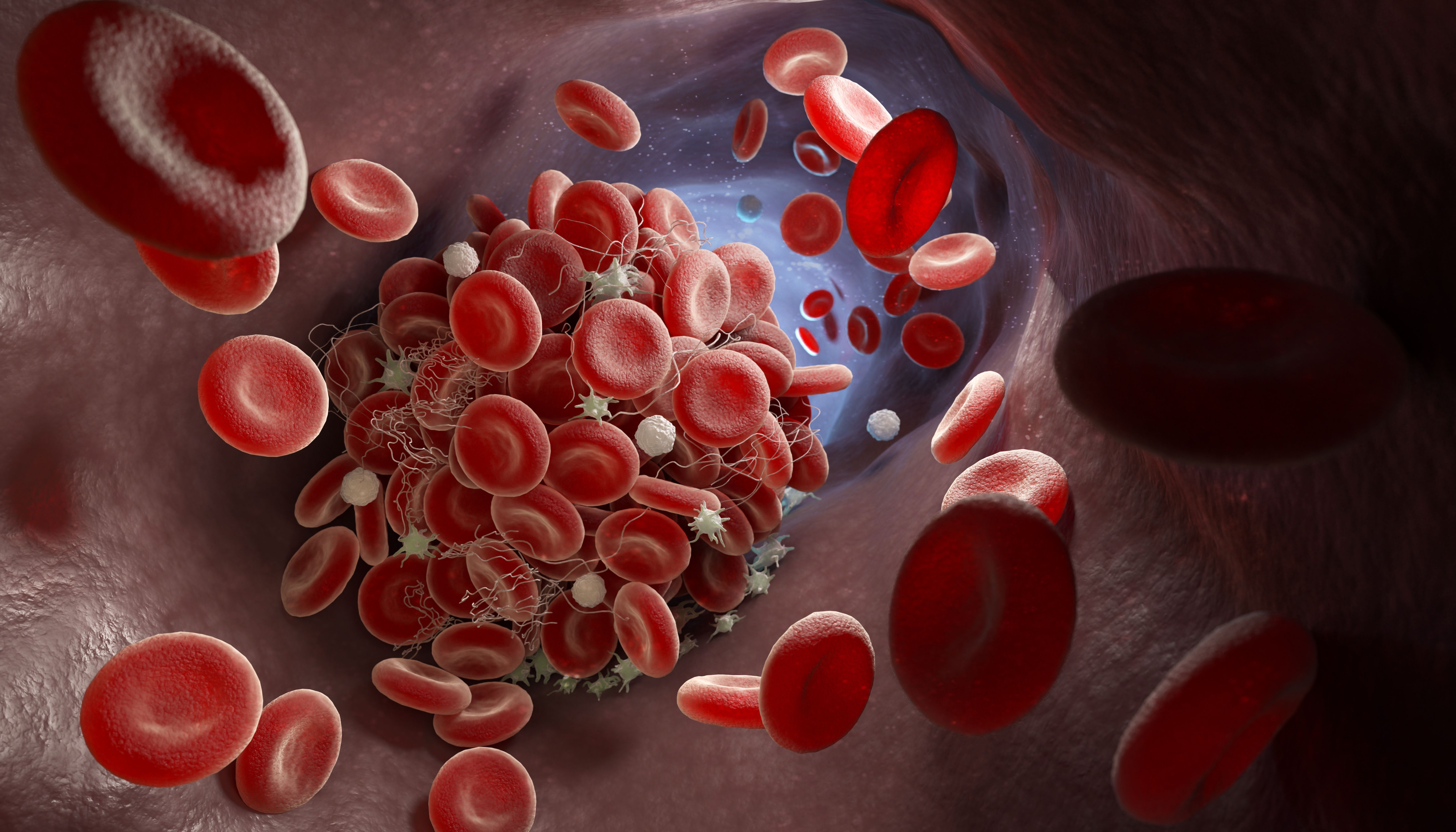Treatment with Brukinsa (zanubrutinib) led to better progression-free survival (PFS; time from treatment until disease worsening or death) compared with Imbruvica (ibrutinib) in patients with relapsed/refractory chronic lymphocytic leukemia (CLL) and small lymphocytic lymphoma (SLL), according to extended follow-up from the phase 3 ALPINE trial presented at the 2023 American Society of Hematology Annual Meeting.
Study highlights:
- This is the first time outcomes for Brukinsa and Imbruvica — which are both a type of drug called Bruton’s tyrosine kinase inhibitors — were directly compared in patients with relapsed/refractory CLL or SLL.
- Patients in the Brukinsa group tended to live longer before their disease got worse.
- Brukinsa also reduced the risk of disease progression in patients with a 17p deletion and/or TP53 mutation — a group that typically has aggressive disease and poor response to treatment.
- Most patients in both groups experienced at least one side effect. Some patients died, while others had to stop treatment.
“ALPINE is the only study to demonstrate PFS superiority in a head-to-head comparison of BTK inhibitors,” Dr. Jennifer R. Brown, director of the CLL Center of the Division of Hematologic Malignancies at Dana-Farber Cancer Institute and the Worthington and Margaret Collette Professor of Medicine in the Field of Hematologic Oncology at Harvard Medical School, Boston, said during a presentation of the data.
“With over three years of follow-up, these data reconfirm (Brukinsa) improved efficacy over (Imbruvica) and a more favorable safety profile in patients with relapsed/refractory CLL/SLL.”
After a median follow-up of 39 months, Brukinsa sustained PFS benefit over Imbruvica, reducing the risk for disease progression by 32%. Brown noted that this benefit was seen across all subgroups, including age, sex, prior lines of therapy, baseline 17p deletion and/or TP53 mutation status, bulky disease, baseline IGHV mutation status, disease stage and complex karyotype.
Among patients with a 17p deletion and/or TP53 mutation, Brukinsa reduced the risk for disease progression by 48%. The 36-month PFS rates with Brukinsa and Imbruvica were 58.6% and 41.3%, respectively. This benefit was seen regardless of 17p deletion and/or TP53 mutation status during the extended follow-up, with Brukinsa reducing the risk for disease progression by 23%.
Additionally, PFS benefit with Brukinsa was confirmed in a sensitivity analysis, designed to include only progression and death events that occurred on active treatment.
In addition, overall response rate (ORR; percentage of patients whose disease shrinks or disappears from treatment) remained higher with Brukinsa compared with Imbruvica (85% versus 74.8%, respectively), according to the abstract.
Brown highlighted that responses with complete remission (CR; disappearance of cancer)/complete remission with incomplete count recovery (CRi) to Brukinsa and Imbruvica deepened (10.4% versus 7.1%, respectively) at 48 months.
The 36-month overall survival rates with Brukinsa and Imbruvica were 82.5% and 79.6%, respectively, reducing the risk for death by 25% with Brukinsa.
Median treatment with Brukinsa was 38.3 months, compared with 35 months with Imbruvica.
Grade 3 to 5 side effects occurred in 72.5% and 77.5% of the Brukinsa and Imbruvica arms, respectively, while fatal side effects were seen in 12.7% and 12.3%. Overall, 50.9% of the Brukinsa arm and 59% of the Imbruvica arm experienced a serious side effect.
Side effects that led to dose reductions occurred in 14.5% of the Brukinsa arm and 18.2% of the Imbruvica arm, dose interruptions in 60.5% and 62%, respectively, treatment discontinuation in 19.8% and 26.2%, and hospitalization in 46.3% and 55.6%.
Further, Brown noted that, despite similar hypertension (high blood pressure) rates in both arms, the change in systolic blood pressure was lower with Brukinsa, while the cardiac safety profile was also more favorable with the agent (cardiac side effects, 24.7% versus 34.6%, respectively).
Serious cardiac side effects were lower with Brukinsa over Imbruvica (3.4% versus 9.6%, respectively) — including atrial fibrillation/flutter (three versus 13), ventricular fibrillation (0 versus 2) and acute coronary syndrome (3 versus 3) — as well as fewer fatal cardiac events (0 versus 6). Cardiac events leading to treatment discontinuation occurred in three patients in the Brukinsa arm and 15 patients in the Imbruvica arm.
ALPINE Study
In the randomized, multinational phase 3 ALPINE trial, 652 patients with relapsed/refractory CLL/SLL after one or more prior treatment were randomized to receive either 160 mg Brukinsa twice daily or 420 mg Imbruvica daily until disease progression or unacceptable side effects.
Patients were stratified by age, geographic, region, refractoriness and 17p deletion and/or TP53 mutation.
Key inclusion criteria included relapsed/refractory disease to one or more prior systemic treatment for CLL/SLL, measurable lymphadenopathy by CT or MRI and treatment per iwCLL. Patients were excluded if they had prior Bruton tyrosine kinase therapy and treatment with warfarin or other vitamin K antagonists.
Demographic and clinical characteristics were balanced at baseline across both groups. Median age was 67 in the Brukinsa arm and 68 in the Imbruvica arm, while the majority were White (81%). Overall, 44.3% and 45.8% of patients, respectively, had bulky disease, 73.4% and 74.2% had unmutated immunoglobulin IGHV status, and 22.9% and 23.1% had a chromosome 17p deletion, a TP53 mutation, or both. Patients received a median of one prior line of therapy, with 7.3% and 9.2% of patients in the Brukinsa and Imbruvica arms, respectively, having received more than three lines of therapy.
Further, 80% of the Brukinsa arm and 76% of the Imbruvica arm had previously received chemoimmunotherapy.
After a median follow-up of 29.6 months, Brukinsa demonstrated superior PFS, compared with Imbruvica, reducing the risk for disease progression by 35%. The 24-month PFS rates were 78.4% and 65.9%, respectively.
Among patients with a 17p deletion and/or TP53 mutation, Brukinsa also showed superior PFS, compared with Imbruvica, reducing the risk for disease progression by 47%.
At extended follow-up, 194 patients (59%) were ongoing with treatment with Brukinsa, compared with 152 (47%) with Imbruvica, after median follow-ups of 40.3 months and 38.7 months, respectively. In the Brukinsa arm, 130 patients discontinued treatment because of side effects (69 patients), progressive disease (PD; 51 patients), withdrawal (seven patients) and lost to follow-up or other (three patients), compared with 172 lost in the Imbruvica arm because of side effects (88 patients), PD (62 patients), withdrawal (15 patients), physician decision (six patients) and lost to follow-up or other (one patient).
For more news on cancer updates, research and education, don’t forget to subscribe to CURE®’s newsletters here.





